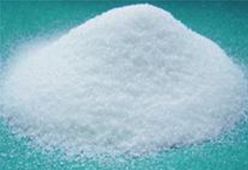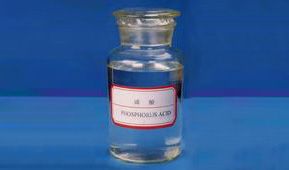您的位置: 首页 - 产品中心产品中心

SINO-PHOS is mainly engaged in the wholesale and retail of chemical products. Its main products include phosphoric acid, sodium tripolyphosphate, sodium hexametaphosphate, sodium tripophosphate, sodium pyrophosphate, etc. At present, the company's products are widely sold to Egypt,Uzbekistan,Peru and other countries and regions, and we are also actively exploring other overseas markets. Since its establishment, the company has always adhered to the concept of "integrity, cooperation, win-win, and mission". We are customer-oriented, continue to innovate around customer needs, strictly control product quality, and focus on providing customers with high-quality products and all-round services. In line with the tenet of "pursuit, growth, technology, spirit, and interests", the company now has a group of capable management talents and a high-quality professional team.
| Classification | Phosphoric Acid |
| Place of Origin | Guizhou, China |
| Other Names | PA 85% |
| MF | 00 |
| EINECS No. | 200-662-2 |
| Grade Standard | Industrial Grade |
| Appearance | white powder |
| Application | Chemical additives and cleaning |
| Brand Name | SINO-PHOS |
| Model Number | zy |
| Product name | phosphoric acid |
| Grade | Industrail Grade |
| Packaging Details |
17kg/bag 42bag/pellet |
| Supply Ability | 105030 Metric Ton/Metric Tons per Week |
| Quantity (metric tons) | > 90566 |
| Lead time (days) | 12 |



25 phosphoric acid bearings FAQs Guide 25 phosphoric acid is a colorless, odorless inorganic acid with the chemical formula H3PO4. It has a wide range of uses in various industries, including food and beverage, fertilizer production, and industrial cleaning. As a food additive, it is commonly used as a flavor enhancer and preservative. In fertilizer production, it serves as a source of phosphorous, an essential nutrient for plant growth. In industrial cleaning, it is used as an effective descaler for metal surfaces. Highly versatile and effective, 25 phosphoric acid is a vital ingredient in many products and processes.
2.Is 25 phosphoric acid biodegradable?
3.What does the reaction of 25 phosphoric acid with water produce?
4.What is 25 phosphoric acid?
5.What is the role of 25 phosphoric acid in soaps and detergents?
6.How is 25 phosphoric acid produced?
7.What are the symptoms of exposure to 25 phosphoric acid?
8.In what substances can 25 phosphoric acid be found?
9.What compounds are produced when 25 phosphoric acid reacts with metals?
10.Which metals can 25 phosphoric acid be used to prevent corrosion?
11.What are the uses of 25 phosphoric acid in agriculture?
12.What is the molecular formula of 25 phosphoric acid?
13.What safety issues does 25 phosphoric acid cause?
14.What effect does 25 phosphoric acid have on plants?
15.What are the potential health effects of 25 phosphoric acid?
1.Is 25 phosphoric acid harmful to the environment?
We enjoy high authority and influence in the industry and continue to innovate products and service models.
Phosphoric acid can be harmful to the environment if it is released into the environment in large quantities. It is considered a hazardous substance and can cause harm to aquatic life if it enters water bodies. It can also contribute to acid rain and damage soil and vegetation if it is released into the air.
Additionally, the production of phosphoric acid can also have negative impacts on the environment, such as air and water pollution, and the depletion of natural resources. Proper handling and disposal of phosphoric acid are important to minimize its potential harm to the environment.
2.Is 25 phosphoric acid biodegradable?
We have established long-term and stable partnerships with our suppliers, so we have great advantages in price and cost and quality assurance.
No, phosphoric acid is not biodegradable. It is a strong acid and does not break down easily in the environment. It can be diluted and neutralized, but it will still persist in the environment for a long time.
3.What does the reaction of 25 phosphoric acid with water produce?
The reaction of phosphoric acid (H3PO4) with water (H2O) produces a solution of phosphoric acid in water. This solution is acidic and contains H+ ions from the dissociation of the acid. The reaction can be represented by the following equation:
H3PO4 + H2O → H+ + H2PO4- + H2O
The H+ ions combine with water molecules to form hydronium ions (H3O+), which give the solution its acidic properties. The H2PO4- ions also contribute to the acidity of the solution. Overall, the reaction produces a solution that is highly acidic and can be used in various industrial and laboratory applications.
4.What is 25 phosphoric acid?
We focus on providing high 25 phosphoric acid quality products and services.
Phosphoric acid is a mineral acid with the chemical formula H3PO4. It is a colorless, odorless, and highly corrosive liquid that is commonly used in the production of fertilizers, detergents, and food and beverages. It is also used in the production of pharmaceuticals, metal treatments, and water treatment. Phosphoric acid is an important source of phosphorus, an essential nutrient for plants and animals. It is also used as an acidifying agent in soft drinks and other food products.
5.What is the role of 25 phosphoric acid in soaps and detergents?
Phosphoric acid is not typically used in soaps and detergents. It is more commonly used in cleaning products such as toilet bowl cleaners and rust removers. In these products, phosphoric acid acts as a strong acid that helps to dissolve and remove mineral deposits and rust stains. It also has some disinfectant properties and can help to kill bacteria and other microorganisms. However, in soaps and detergents, other ingredients such as surfactants and enzymes are typically used to remove dirt and stains from surfaces.

6.How is 25 phosphoric acid produced?
Phosphoric acid is primarily produced through the wet process, which involves the reaction of phosphate rock with sulfuric acid. This process results in the production of a crude phosphoric acid, which is further purified through various methods, such as evaporation and filtration, to obtain the pure form of phosphoric acid.
7.What are the symptoms of exposure to 25 phosphoric acid?
We pay attention to employee development and benefits, and provide a good working environment in order to improve the efficiency of employees and improve the quality management of 25 phosphoric acid products.
The symptoms of exposure to Phosphoric acid include irritation and burning of the skin, eyes, and respiratory tract. Ingestion can cause abdominal pain, nausea, and vomiting, and may lead to severe damage to the throat and digestive tract. Long-term exposure can also cause damage to the teeth, bones, and kidneys. It is important to seek medical attention immediately if you experience any of these symptoms after being exposed to Phosphoric acid.
8.In what substances can 25 phosphoric acid be found?
We maintain a stable growth through reasonable capital operations, focus on industry development trends and cutting -edge technologies, and focus on product quality and safety performance.
Phosphoric acid, also known as orthophosphoric acid, is a colorless, odorless mineral acid with the chemical formula H3PO4. It is a weak acid that is commonly found in many food and beverage products, such as soft drinks, processed meats, and dairy products. It is also widely used as a chemical reagent in the production of fertilizers, detergents, and pharmaceuticals. Phosphoric acid can also be found naturally in rocks and soils, and in the human body where it plays important roles in metabolism and bone formation. However, excessive intake of phosphoric acid can have negative effects on dental health and the kidneys.
9.What compounds are produced when 25 phosphoric acid reacts with metals?
Our products & services cover a wide range of areas and meet the needs of different fields.
The compounds produced when phosphoric acid reacts with metals depend on the specific metal being used. Generally, the reaction produces a salt and hydrogen gas. For example:
1. Phosphoric acid + iron → iron phosphate + hydrogen gas
2. Phosphoric acid + magnesium → magnesium phosphate + hydrogen gas
3. Phosphoric acid + zinc → zinc phosphate + hydrogen gas
In all cases, the hydrogen gas is released as a byproduct of the reaction. The resulting salt, such as iron phosphate or magnesium phosphate, will depend on the specific metal used.
10.Which metals can 25 phosphoric acid be used to prevent corrosion?
We have established a good reputation and reliable partnerships within the 25 phosphoric acid industry.
Phosphoric acid can be used to prevent corrosion on metals such as iron, steel, aluminum, and zinc. It can also be used on alloys containing these metals, such as stainless steel and galvanized steel.

11.What are the uses of 25 phosphoric acid in agriculture?
Our company has many years of 25 phosphoric acid experience and expertise.
Phosphoric acid, also known as orthophosphoric acid, is an important chemical compound with various uses in agriculture. It is commonly used as a fertilizer in the form of phosphate rock, which is derived from the acidification of phosphate ores. Phosphoric acid plays a crucial role in plant growth by providing essential nutrients such as phosphorus, which is essential for the development of strong roots and overall plant health. It is also used as a soil conditioner to adjust the pH level and increase the availability of other nutrients in the soil. In addition, phosphoric acid is used as a food additive to provide tartness and acidity in soft drinks, meat products, and condiments. Its role in agriculture is vital in maximizing crop yield and maintaining soil fertility, making it an indispensable ingredient in the agricultural industry.
12.What is the molecular formula of 25 phosphoric acid?
We have been working hard to improve service quality and meet customer needs.
The molecular formula of phosphoric acid is H3PO4.
13.What safety issues does 25 phosphoric acid cause?
We have a first -class management team, and we pay attention to teamwork to achieve common goals.
Phosphoric acid is a chemical compound commonly used in the production of fertilizers, detergents, and food additives. However, it can also pose significant safety hazards if mishandled or ingested. One of the main concerns with phosphoric acid is its corrosive nature, which can cause severe burns if it comes into contact with the skin or eyes. Inhaling its vapors can also irritate the respiratory system and lead to breathing difficulties. Furthermore, if ingested in high concentrations, it can cause digestive problems and potentially lead to organ damage. Taking appropriate precautions and following safety guidelines when handling phosphoric acid is crucial to minimize potential health risks.
14.What effect does 25 phosphoric acid have on plants?
We adhere to the principle of integrity and transparency, and establish long -term relationships with partners, and we attach great importance to this detail.
Phosphoric acid is a source of phosphorus, an essential nutrient for plant growth. It helps plants with root development, photosynthesis, and overall growth. However, excessive amounts of phosphoric acid can be harmful to plants, causing nutrient imbalances and potentially damaging the plant's roots. It is important to use phosphoric acid in moderation and follow recommended application rates to avoid negative effects on plants.
15.What are the potential health effects of 25 phosphoric acid?
In small amounts, phosphoric acid is generally safe for human consumption. However, long-term exposure to high concentrations can cause damage to the teeth and bones. It can also irritate the skin and respiratory tract if inhaled.



